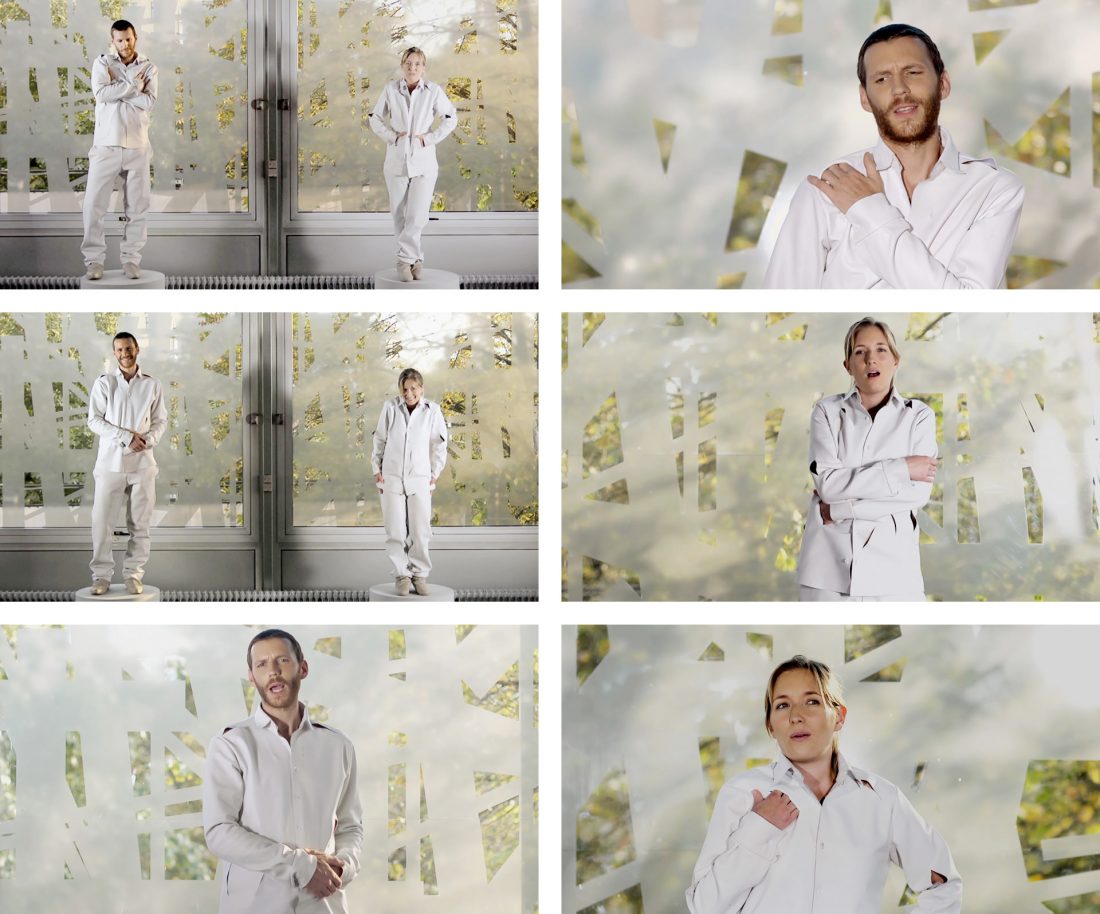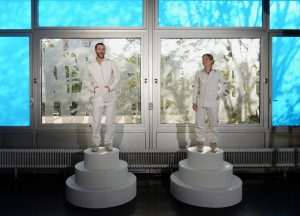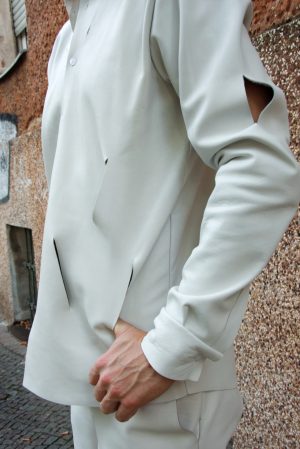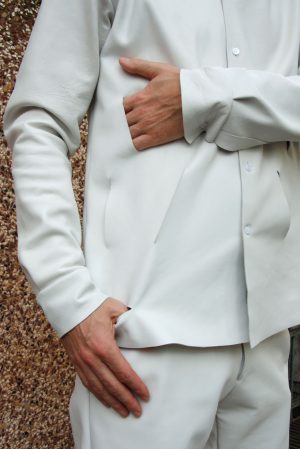Significant Other 2011


Testing Stage, Hebbel am Ufer theatre, Berlin
Performance, duration 15 min, 2 wooden platforms

Stills
Video, 15 min

Leather costume suits and leather shoes, detail



These brief audio snapshots operate like precise surgical incisions
and for a moment, through the speculum of narrative, we get a glimpse
inside the protagonists. Aladağ emphasizes this moment with similarly
clear cuts into the second skin that surrounds us: clothing. The actors
wear leather trousers and tops. For each of the different figures they
briefly, literally, and symbolically go under that skin – pushing their
hands into the slit openings as if creating access to the not-visible in
the body’s interior. (excerpt from the text by Nico Anklam)
Two actors, man and woman, stand on a small podium performing the chorus of the song: “Girl you know it’s true, oooooooh, I love you.” In 1989, Milli Vanilli hit the charts worldwide with this single and only a year later, their success turned to infamy when it was revealed that the lead vocals on the record were not the actual voices of the singers.
Aladağ takes pop music’s promise to be a universal language literally. After the opening song of Significant Other, we hear different people reflecting on the topics of love and relationship – all of which lip-synched by the two protagonists: We see the lips of the male actor move – but we hear a woman’s voice. We see the female actor – but we hear a child’s voice, a foreigner’s voice etc. The effect is irritating: Who is talking here?
Significant Other, as many of Nevin Aladağs works, blurs the lines between authentic expression and role play, turning identity from something categorized by sex, age and origin into something negotiable. The most simple and at the same time most complex questions lay at the centre of this oeuvre: who are we? How do we want to live? Where do we come from? Searching for answers, Aladağ investigates what may be called our cultural DNA: the point where the inner and the outer, self and society, determination and freedom collide. (excerpt from the text by Sebastian Frenzel)




